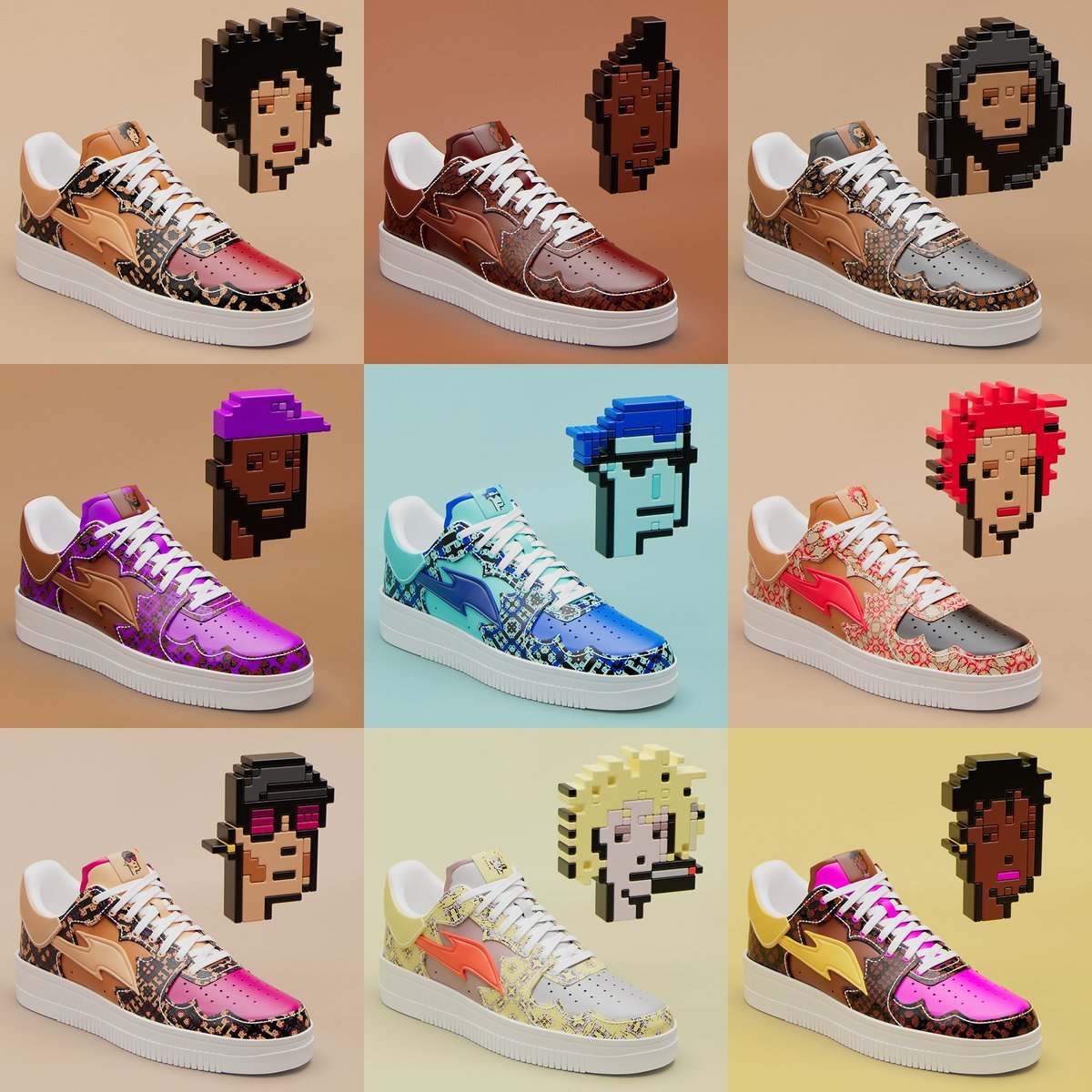Sneakers in the Metaverse: The Dematerialization of Fashion
The Metaverse is here and sneaker brands are jumping on! Will your next sneaker be digital?
Earlier this month, it was revealed that Nike was ready to take on the Metaverse with the creation of their own NFT’s. The conversation around the use of NFT’s (non-fungible tokens) in the fashion industry has grown significantly in the past few years. Where we are currently standing in line to get our hands on the latest pair of sneakers in order to wear them, the sneakers you buy in the future might not even be physical. What can we expect from the sneaker Metaverse and how could this lead to a possible dematerialized and more sustainable sneaker culture?
The Rise of NFT’s
Non-fungible tokens (NFT) have been a very hot topic as of late. Where in the past few years, seemingly everyone was creating a crypto wallet to buy into the bitcoin hype, we are now witnessing the rise of a new digital asset. NFT’s are now regarded by many as an important new possibility for revenue generation for brands and artists. So, what is an NFT first of all? An NFT is a unique piece of digital art that is created on the blockchain. Almost any digital asset can be turned into an NFT, which can then be sold. Blockchain technology ensures that all transactions around an NFT are recorded, creating a digital documentation of authenticity for the art that cannot be changed by anyone.
Memes are now being turned into NFT’s and they are actually being sold for hundreds of thousands of dollars. It is an interesting concept, since even with the meme being turned into an NFT, we are all still allowed to copy and share the image. But essentially what we are sharing is now a photo of the original one. And the original one can continue to grow in value as it is shared more and more. A real-world example you could compare it to is the Mona Lisa. We can take pictures of the painting and share copies of it, but we do not own the original one. And while we share copies of the painting, the original one gets more famous and more valuable. Even though NFT’s have been around since 2014, they have only really skyrocketed in popularity in the past year. The question now is how and when these digital assets will come into the hands of the masses.
First Movers
Earlier this year, digital fashion house RTFKT managed to sell $3.1 million worth of NFT sneakers within 7 minutes. RTFKT managed to truly create something new and is now associated with Elon Musk and major fashion brands that are also starting to get interested in the possibilities of selling digital products to create new streams of revenue in the future. The Fabricant is another example of a digital fashion house that aims to disrupt the industry through the creation of digital-only clothing. They are based in Amsterdam, The Netherlands, and have worked with brands like Puma and Adidas to create digital apparel.
Last month, Nike announced a partnership with Roblox, a global online platform where users can meet and play games. They created an immersive 3D space that takes inspiration from Nike’s World Headquarters. Visitors can participate in games such as tag, the floor is lava, and dodgeball with their friends and, with the NIKELAND tool kit, people can design their own mini-games. Finally, a digital showroom allows you to outfit your NIKELAND avatar with special Nike products. This is one of the first visible steps of Nike venturing directly into the metaverse. The company is also looking into the creation of their very own NFT’s, since we saw a patent on CryptoKicks that was filed by the brand back in late 2019. We can probably expect to see physical footwear accompanied by digital footwear on the blockchain in the near future from Nike.
Dematerialization of Sneaker Culture
At this point in time, a lot of modern sneaker culture is very hype driven. We are seeing new releases every single day from the major brands. The result is that we get amazing sneakers, but we are also driving overconsumption. To create sneakers, a lot of natural resources are taken, emissions are produced and a lot of waste is generated once we get rid on the shoes. Apart from wearing the shoes, important reasons for modern collectors to buy limited edition sneakers are to build a beautiful collection, have something that others don’t have or to be able to show off to the people you want to be recognized by. A recent example of collecting digital assets that most of us participated in is Pokémon Go. Pokemon Go also ended up partnering with Nike to create digital outfits for your avatar in the game. Digital skins and outfits for computer game characters have become very important, and recognized to the point where Louis Vuitton collaborated with League of Legends for exclusive skins that players were able to obtain in game.
The rise of NFT’s might be able drive the so-called ‘dematerialization’ of fashion. Dematerialization is defined as the reduction of the quantities of materials needed to serve an economic function. People’s sneaker collections could, at least partially, become digital instead of physical, which would reduce the amount of materials and natural resources we use. It will be interesting to see if at least part of the sneaker releases will be only in the form of a digital asset and how this will affect the sneaker culture.





